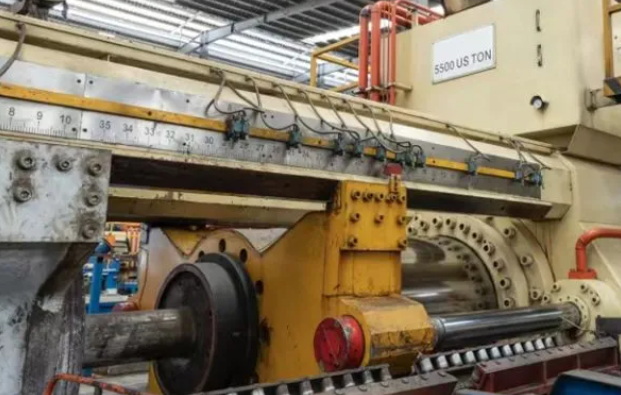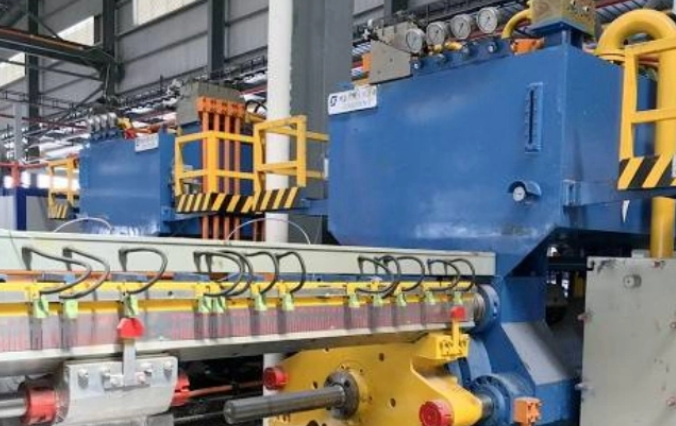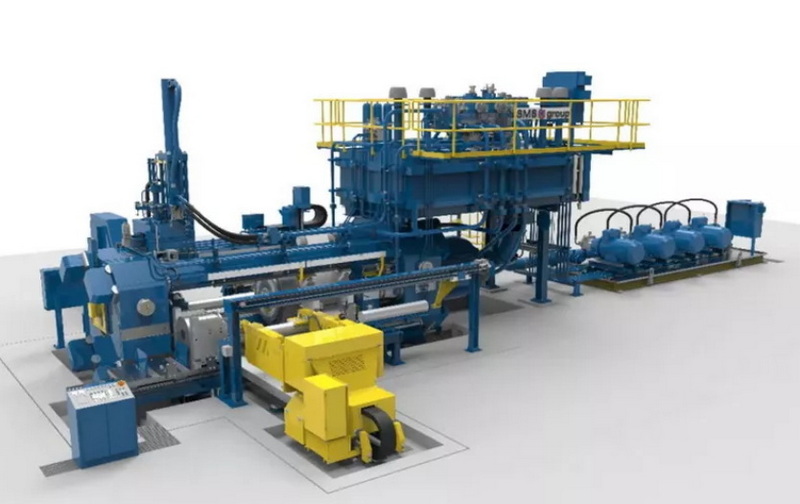Content Menu
● Introduction to Foam Extrusion Equipment
● The Science Behind Foam Extrusion
>> Physical vs. Chemical Foaming
● Key Components of Foam Extrusion Equipment
● Types of Foam Extrusion Equipment
● How Foam Extrusion Equipment Works: Step-by-Step Process
>> 1. Raw Material Feeding
>> 2. Melting and Mixing
>> 3. Blowing Agent Addition
>> 4. Pressure and Temperature Control
>> 5. Extrusion Through Die
>> 6. Expansion and Foaming
>> 7. Cooling and Stabilization
>> 8. Cutting and Winding
● Materials Used in Foam Extrusion
● Applications of Foam Extrusion Equipment
● Innovations and Trends in Foam Extrusion Technology
● Advantages and Challenges of Foam Extrusion Equipment
>> Advantages
>> Challenges
● Maintenance and Safety Considerations
● Conclusion
● FAQ
>> 1. What types of polymers can be processed with foam extrusion equipment?
>> 2. What is the difference between physical and chemical foaming in foam extrusion?
>> 3. How does screw design affect foam extrusion equipment performance?
>> 4. What are the main applications of foam extrusion equipment?
>> 5. How can manufacturers ensure consistent foam quality in extrusion processes?
● Citations:
Foam extrusion equipment is at the heart of modern manufacturing processes that produce lightweight, durable, and versatile foam products used across industries—from packaging and insulation to automotive and consumer goods. This comprehensive article explores the fundamentals of foam extrusion equipment, its working principles, types, applications, and the technological innovations driving the field forward.

Introduction to Foam Extrusion Equipment
Foam extrusion equipment refers to specialized machinery designed to produce foamed plastic products by forcing molten polymer mixed with a blowing agent through a die, resulting in a cellular, lightweight structure. These machines are crucial for manufacturing a wide range of foam products, including sheets, boards, profiles, and tubes, which are widely used for their excellent insulation, cushioning, and structural properties[1][3][5].
Leading manufacturers such as ALEMO and USEON have developed advanced foam extrusion lines capable of processing various polymers, including polyethylene (EPE), polypropylene (EPP), and polystyrene (XPS), with high productivity and consistent quality[1][5].
The Science Behind Foam Extrusion
At its core, foam extrusion is a process that transforms solid polymers into expanded, cellular materials by incorporating a foaming agent during the extrusion process. The foaming agent, which can be physical (gas) or chemical, creates gas bubbles within the molten polymer. As the mixture exits the die and pressure drops, these bubbles expand, forming the characteristic foam structure[2][3][4].
Physical vs. Chemical Foaming
- Physical foaming involves injecting gases like CO₂ or N₂ directly into the polymer melt[4].
- Chemical foaming uses additives that decompose under heat, releasing gases that form the foam[2][3].
This controlled foaming process results in materials with reduced density, enhanced thermal insulation, and improved cushioning properties.
Key Components of Foam Extrusion Equipment
Foam extrusion equipment consists of several integrated components, each playing a vital role in the production process:
- Extruder: The main unit where polymer melting, mixing, and foaming agent incorporation occur. Can be single or twin-screw[1][5].
- Feeding System: Delivers raw polymer pellets and additives into the extruder.
- Screw(s): Rotating elements that convey, melt, and mix the polymer and foaming agent. Screw design (length-to-diameter ratio, profile) is critical for optimal foaming[2][5].
- Blowing Agent Dosing System: Precisely meters the foaming agent (gas or chemical) into the molten polymer[4].
- Mixing and Cooling Systems: Ensure homogenous mixing and control melt temperature to prevent premature foaming or degradation[4][5].
- Extrusion Die: Shapes the expanding polymer into the desired profile or sheet.
- Calibration and Cooling Section: Stabilizes the foam structure as it exits the die.
- Cutting and Winding Units: Finalize product dimensions and prepare for packaging or further processing[1].
Types of Foam Extrusion Equipment
The choice of foam extrusion equipment depends on the desired product, polymer type, and production scale. Key types include:
- Single-Screw Foam Extruders: Common for simpler processes and lower output; suitable for certain foam sheets and profiles[1].
- Twin-Screw Foam Extruders: Offer superior mixing, higher throughput, and are ideal for complex formulations and high-volume production[1][5].
- Microcellular Foam Extrusion Systems: Specialized for producing foams with ultra-fine, uniform cell structures, often using physical blowing agents for advanced applications[4].
- Lab-Scale Foam Extrusion Equipment: Used for research, development, and small-batch production, allowing precise control and experimentation[5].
How Foam Extrusion Equipment Works: Step-by-Step Process
Understanding the workflow of foam extrusion equipment is essential for grasping its capabilities and applications. Here is a step-by-step overview:
1. Raw Material Feeding
Polymer pellets and additives are fed into the extruder's hopper. The feeding system ensures a consistent supply of materials.
2. Melting and Mixing
Inside the extruder, the rotating screw(s) convey the materials forward. Friction and external heaters melt the polymer, creating a homogeneous molten mass[2][3].
3. Blowing Agent Addition
A foaming agent—either a gas (physical) or a chemical additive—is introduced into the melt. The agent dissolves or disperses uniformly within the polymer[2][4].
4. Pressure and Temperature Control
The extruder maintains high pressure and controlled temperature to keep the gas or decomposed chemical agent dissolved in the melt, preventing premature foaming[2].
5. Extrusion Through Die
The pressurized, gas-laden melt is forced through a specially designed die that shapes the material into the desired profile, sheet, or tube[1].
6. Expansion and Foaming
As the material exits the die, the sudden drop in pressure allows the dissolved gas to expand, forming a cellular foam structure within the polymer[2][3][4].
7. Cooling and Stabilization
The foamed product is cooled and stabilized, often by passing through a calibration section or water bath, to lock in the cellular structure and dimensions.
8. Cutting and Winding
The continuous foam product is cut to length or wound onto rolls, ready for downstream processing or shipping[1].

Materials Used in Foam Extrusion
Foam extrusion equipment is highly versatile, capable of processing various thermoplastic polymers, including:
- Polyethylene (PE): Especially expanded polyethylene (EPE) for packaging and insulation[1][5].
- Polypropylene (PP): Used for automotive and industrial foams[1].
- Polystyrene (PS): Particularly extruded polystyrene (XPS) for insulation boards[1].
- Other Polymers: PVC, PET, and engineering plastics for specialized applications[4].
The choice of polymer and blowing agent depends on the target product's mechanical, thermal, and chemical properties.
Applications of Foam Extrusion Equipment
Foam extrusion equipment enables the production of a wide array of products, including:
- Packaging Materials: Protective foam sheets, corner protectors, and cushioning inserts[3].
- Thermal Insulation: XPS and EPE boards for building insulation.
- Automotive Parts: Lightweight, impact-absorbing components.
- Consumer Goods: Swim noodles, exercise mats, footwear, and more[3].
- Pipes and Profiles: Lightweight, insulated pipes for plumbing and HVAC applications[4].
- Cable Insulation: Foamed dielectric layers for electrical cables[4].
The versatility of foam extrusion equipment makes it indispensable across many sectors.
Innovations and Trends in Foam Extrusion Technology
The foam extrusion industry is rapidly evolving, driven by demands for sustainability, efficiency, and product performance. Recent innovations include:
- Microcellular Foaming: Produces foams with extremely fine, uniform cells, reducing material usage and enhancing mechanical properties[4].
- Advanced Blowing Agents: Use of environmentally friendly gases like CO₂ and N₂, minimizing environmental impact[4].
- Digital Control Systems: Intelligent process control for precise temperature, pressure, and dosing management[5].
- Retrofit Solutions: Modular systems that can be integrated into existing extrusion lines for enhanced foaming capabilities[4].
- Material Optimization: Custom screw designs and nucleation additives for improved foam quality and consistency[5].
These advancements are making foam extrusion equipment more efficient, flexible, and sustainable.
Advantages and Challenges of Foam Extrusion Equipment
Advantages
- Material and Cost Savings: Reduced raw material consumption due to foaming[4].
- Lightweight Products: Essential for transportation, packaging, and automotive applications.
- Thermal and Acoustic Insulation: Superior insulation properties for construction and appliances.
- Design Flexibility: Ability to produce complex shapes and profiles.
- Sustainability: Use of recyclable polymers and eco-friendly blowing agents.
Challenges
- Process Control: Maintaining consistent foam quality requires precise control of temperature, pressure, and dosing[2][5].
- Material Compatibility: Not all polymers are suitable for foaming without modification.
- Equipment Investment: Advanced foam extrusion equipment can require significant capital investment.
- Operator Expertise: Skilled operators are needed to manage complex extrusion processes.
Maintenance and Safety Considerations
Proper maintenance and safety protocols are essential for the reliable and safe operation of foam extrusion equipment:
- Regular Inspection: Routine checks of screws, barrels, dies, and dosing systems to prevent wear and blockages.
- Calibration: Periodic calibration of temperature and pressure sensors for accurate process control.
- Cleaning: Scheduled cleaning to remove polymer residues and prevent contamination.
- Operator Training: Comprehensive training on equipment operation, troubleshooting, and emergency procedures.
- Safety Systems: Installation of pressure relief valves, emergency stops, and interlocks to protect personnel and equipment.
Conclusion
Foam extrusion equipment is a cornerstone of modern manufacturing, enabling the production of lightweight, high-performance foam products for a vast range of applications. By leveraging advanced technologies, precise process control, and innovative materials, manufacturers can achieve significant material savings, improved product quality, and enhanced sustainability. As the industry continues to evolve, foam extrusion equipment will remain at the forefront of material innovation, meeting the demands of a dynamic global market.

FAQ
1. What types of polymers can be processed with foam extrusion equipment?
Foam extrusion equipment can process a variety of thermoplastic polymers, including polyethylene (EPE), polypropylene (EPP), polystyrene (XPS), PVC, and PET, among others. The choice depends on the desired product properties and application requirements[1][4][5].
2. What is the difference between physical and chemical foaming in foam extrusion?
Physical foaming involves injecting gases like CO₂ or N₂ directly into the polymer melt, while chemical foaming uses additives that decompose under heat to release gas. Both methods create a cellular structure, but physical foaming often enables finer, more uniform cells[2][3][4].
3. How does screw design affect foam extrusion equipment performance?
The screw's length-to-diameter ratio, profile, and mixing elements are critical for ensuring proper melting, mixing, and foaming agent dispersion. Optimized screw design leads to consistent foam quality and efficient production[2][5].
4. What are the main applications of foam extrusion equipment?
Foam extrusion equipment is used to produce packaging materials, insulation boards, automotive components, consumer goods, pipes, profiles, and cable insulation, among other products[3][4].
5. How can manufacturers ensure consistent foam quality in extrusion processes?
Consistent foam quality is achieved by precisely controlling process parameters such as temperature, pressure, screw speed, and foaming agent dosing. Advanced digital control systems and regular equipment maintenance also play a vital role[2][4][5].
Citations:
[1] https://alemo.eu/foam-extrusion/
[2] https://bergeninternational.com/processing-tips/extrusion-extruding-chemical-foaming-agents-plastics-processing-guide/
[3] https://www.entecpolymers.com/products/processing-methods/extrusion-foam
[4] https://www.promix-solutions.com/en/foaming/foam-extrusion
[5] https://www.useon.com/foam-extrusion/
[6] https://www.alibaba.com/showroom/foam-extrusion-equipment.html
[7] https://davis-standard.com/extrusion_system/foam/
[8] http://www.industrialextrusionmachinery.com/plastic_extrusion_compound_extrusions_and_foam_extrusion.html
[9] https://www.malikengg.com/technical-article/Foams.pdf
[10] https://www.alibaba.com/showroom/ps-foam-sheet-extruder-machine.html
[11] https://hzaochi.en.made-in-china.com/product/NogJZnEDayRt/China-105-PE-Foam-Sheet-Extrusion-Machine.html
[12] https://plasticmachinery.made-in-china.com/products/Foam-Extrusion-Line-146.html
[13] https://www.cowellextrusion.com/foam-extruder-the-best-choice-for-efficient-production-and-foam-process/
[14] https://greenchemicals.eu/wp-content/uploads/2024/06/Academy-day-3-Flat-Foam-Extrusion-Ricci.pdf
[15] https://cqjiecheng.en.made-in-china.com/product/dyEnbekoLYWC/China-Plastic-Extruder-Foam-Making-Machine-Extrusion-Line-Jc-180.html
[16] http://www.foamtech-korea.com/pe-foam-sheet-extrusion-line.html
[17] https://www.youtube.com/watch?v=qHrrjAMfiNo
[18] https://www.foampacific.co.kr
[19] https://alemo.eu
[20] https://www.chanchao.com.tw/CIMIF/visitorProductDetail.asp?no=49197






















